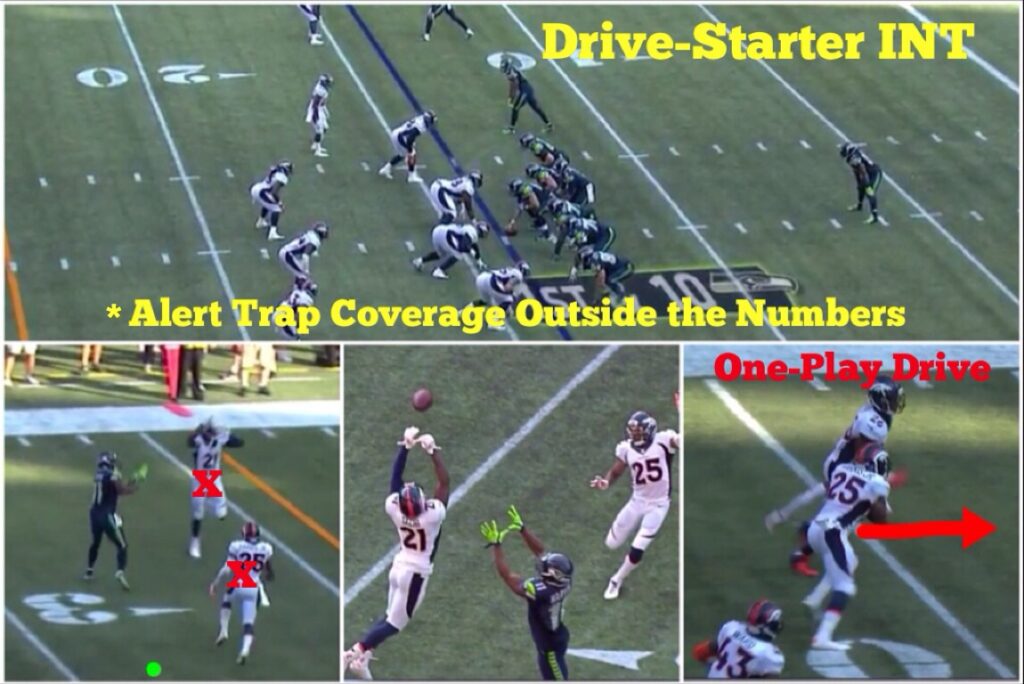When someone embarks on the task of crafting a column centered on “stifling,” “thwarting,” or “confining” the Broncos’ offensive prowess, it invariably proves to be a futile endeavor.
In the realm of NFL competition, week after week, some team endeavors to impose such restrictions, only to fall short in their mission.
Delving into the extensive annals of encounters with Peyton Manning-led offensive units and dissecting the current season’s rendition, one discerns a particular vulnerability.
They can be defeated, albeit not with the same regularity as other teams in the current landscape.
However, the key lies not in specific play calls, individual matchups, or the customary statistics that often captivate the media’s attention.
The means to neutralize this formidable Broncos offense follow a more abstract narrative grounded in collective effort.
To clarify, executing just one or a handful of these strategies likely won’t suffice; they stand as a testament to the Broncos’ exceptional prowess. Success necessitates the fulfillment of multiple imperatives throughout the game.
It’s a concept that rolls off the keyboard with ease but transforms into a formidable challenge when translated into on-field action.

Here’s a simple outline of MUSTS for the Patriots…and any other team that aims to stop this Broncos offensive juggernaut:
Win the Ball Disruption Game-within-the-Game
Discussing the significance of gaining an edge in the turnover department against a Peyton Manning-led offense may appear straightforward.
Nevertheless, in a season marked by Manning’s impressive 22 touchdowns versus a mere three interceptions, relying solely on historical trends, stadium conditions, weather, or narrative twists to induce errant throws is insufficient.
Thankfully, interceptions aren’t the sole avenue to disrupt the game’s flow.
While there remains a slim prospect of Manning committing unforced errors, placing faith in such occurrences to shape the game is unwise. Instead, one must actively pursue opportunities for ball disruption.
Pressuring Manning, a go-to tactic for some, often proves deceptive. Attempting to rattle him may lead to being outwitted by his quick adjustments and hot-route decisions.
Historically, forcing the Broncos to navigate a challenging, methodical route has yielded superior results. Thus, any strategy that exposes a defense to additional risks while seeking an advantage is ill-advised.
Suppose it becomes evident that Manning is not prone to gift turnovers. In that case, the alternative approach is to wrest the ball from his intended targets, a skill showcased adeptly by the Seattle Seahawks in their early-season triumph over the Broncos.
Occasionally, interposing between Manning and his completion targets is an impractical route to achieving turnover success.
Likewise, relying on a single defender to strip or dislodge the ball from a ball carrier is equally improbable.
Ball disruption, in its essence, manifests as a collective effort, a group undertaking that may unfold after the pass is completed.
The Broncos boast ball carriers who have exhibited susceptibility to security breaches. Keep a keen eye on Demaryius Thomas, Emanuel Sanders, and Wes Welker, who will likely attract aggressive second-man attention.
The critical query pertains to whether these opportunities are capitalized upon, and if so, at a rate surpassing the Patriots’ propensity for surrendering turnovers.

Eliminate Do-Nothing Offensive Drives
One of the most effective methods to overcome the Broncos’ offensive prowess lies in the capability of your offense, which doesn’t necessarily entail engaging in a high-scoring shootout.
Instead, it hinges on the realization that your defense will face one of its most formidable challenges on this particular day.
Hence, it becomes imperative to avoid adding additional pressure on the defense by experiencing quick three-and-out possessions or, worse yet, suffering from disastrous one-play drives, as exemplified below.

While time of possession remains a valuable metric for assessing success, in this game, the emphasis should shift towards “no free lunch.”
The Broncos’ defense boasts considerable strength, particularly on the periphery, spanning their secondary and front seven.
Opting for high-risk, downfield, or perimeter plays in the early stages of offensive sequences plays directly into Denver’s strengths.
To grant your defense the necessary respite and opportunities to evaluate sideline images for in-game adjustments, it’s crucial to eschew risky play-calling in the initial phases of drives.
The vulnerabilities within the Broncos’ defense predominantly lie between the hash marks.
It is advisable to concentrate efforts there, ensuring that your offensive drives remain productive and not inadvertently burden your defense with short, ineffective possessions.
Don’t Let the Track Team Run
Every eligible receiver must feel the impact on every down. Julius Thomas cannot be permitted a free release from the line of scrimmage.
Ronnie Hillman should not be allowed to slip out of the backfield unchecked for easy check-down receptions when Manning looks to unload.
Emanuel Sanders cannot reach the top of his routes, 25 yards down the field, without encountering physical competition for the ball.
The prospect of penalties may arise, but the willingness to challenge the boundaries remains paramount.
Call it a page from the Belichick playbook, but the idea isn’t to advocate reckless play. There may come a juncture where playing it safe is no longer an option.
The approach should reside on the edge, with a keen understanding of the context that defines this pivotal game.
This is the marquee matchup of the week in the NFL, possibly one of the highlights of the regular season slate.
It represents the zenith of NFL entertainment, and fans don’t fill Gillette Stadium or tune in at home to witness officials laboriously explain their rulebook.
Dare the officials to disrupt the game with constant stoppages. Brandon Browner, Darrelle Revis, Logan Ryan, Jamie Collins, Patrick Chung, and the entire defensive unit should physically engage with every route runner on the field.
The paramount focus should be red zone scoring, and one must batter the Broncos in every conceivable manner until that scoring zone is reached.
The Seahawks were permitted to adopt this style, and it’s a reasonable gamble that a similar approach might be tolerated.
If the officials inadvertently make themselves the focal point, adjustments can be made later in the game. In the meantime, the Broncos’ fleet-footed receivers cannot be allowed to operate without resistance, period.
The Patriots boast a rich history of achieving victory through football’s fundamental principles against formidable opponents such as the Greatest Show on Turf and Manning-led Indianapolis teams of yesteryears.
In the prevailing inclement conditions, a more tenacious style of play is imperative.
A physical game can still produce points and deliver an entertaining football spectacle, and it’s the solitary approach capable of slowing down the Broncos’ offensive juggernaut.

There exists no single formula for defeating the Broncos. However, prioritizing ball disruption, making efficient use of offensive possessions, and toeing the line with physical play are undeniable prerequisites for achieving what has proven elusive for so many teams against Denver this season.
This matchup promises to be an exhilarating spectacle. Pay close attention to these three critical facets of the game. Their execution will significantly influence whether Patriots fans witness the coveted “Manning Face” today.

